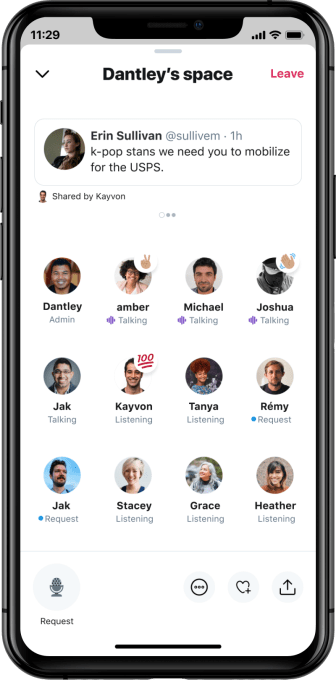As Italy reinstates many COVID-19 restrictions, the country’s tech ecosystem is watching and waiting to see what the wider effects of the emergency will be. Italy’s ecosystem for tech venture capital and startups has been in development for years and has made decent strides in the last decade. Will the coronavirus stymie their efforts?
Put off by high taxes and paperwork in their home country, many Italian entrepreneurs moved to places like London in years past to startup. Indeed, the Italian Ministry of Economic Development and the Italian Trade & Investment Agency in London have even been known to fund Italian entrepreneurs abroad to help them gain more experience. There are an estimated 100,000 Italians already living in London, attracting the likes of Riccardo Zacconi, co-founder of King.com (maker of Candy Crush) and Simon Beckerman of social shopping app Depop.
Rome has more than 20 incubators/accelerators and many established VCs; because of its lower costs compared to other European cities, it’s become a major base for startups. However, while many startups exist in cities like Turin, Bologna, Naples and Rome, Milan is generally seen as a bigger ecosystem because of its mercantile culture and a significant share of VC funds.
The good news: VC funding in Italy has grown. In 2019, Italian startups attracted $850 million, compared to just €140 million in 2017, as the VC ecosystem became less insular and more international investors arrived. Milan tends to attract the lion’s share of VC funding — in 2019, startups located there received €311 million, according to NGP Capital. In 2019, about 300 deals were venture-backed.
Even so, Italy is still very much behind its European counterparts, which means founders tend to move their HQ to fundraise elsewhere, while keeping their comparatively cheaper workforce at home. Italy continues to have structural problems for startups: Credit is based on a company’s financial history, so loans are off-limits.
However, in June 2020, the Italian government sponsored a €1 billion investment program aimed at the native startup ecosystem, creating a new venture arm: CDP Venture Capital.
This has seven different funds under management, including a VC fund-of-funds, “Series A/B matching” funds and acceleration funds. It has also launched two different acceleration projects aimed at supporting SMEs and startups with mentoring, networking and support services.
Additionally, the Ministry of Economic Development launched an initiative called The Italian Startup Act that bundled previously passed legislation to incentivize the Italian ecosystem with tools like tax breaks on early-stage investments and R&D credits, plus a startup visa to attract talent.
Entrepreneurs still face plenty of red tape, however, which is tough enough for Italians, let alone outsiders who might consider relocating. And skeptical observers are concerned that some of the government-backed initiatives look like the government is trying to pick winners, which rarely ends well. Plus, there is controversy about how a €209 billion recovery fund from the European Union, earmarked for the country’s 11,000 startups, will be spent.
But the talent pool is increasing, with Italian universities attracting more overseas students with English-language-based courses and big corporates investing. Microsoft has announced a $1.5 billion investment plan, which includes its first cloud data center in the country. NTT data is investing in Calabria. Amazon has invested in new infrastructure. And Apple has sponsored a Naples-based developer academy.
With a population of 60 million (for comparison, U.K.: 66 million, Germany: 83 million, Spain: 46 million), Italy is not lacking in people, but GDP per capita is a low $34,000. It has an estimated 67 VC funds, with 18 of them started since 2015.
Notable startups from Italy include MoneyFarm (which has raised $127 million from United Ventures, Allianz), Prima.it (€100 million, Blackstone, Goldman Sachs), Soldo (€83 million, Accel, Battery Ventures), Casavo (€59 million, Greenoaks, Picus, Project A, 360 Capital), Milkman (€32 million, p101, 360 Capital Partners) and Mosaicoon (€12 million).
Approximately half of seed to Series A funds have raised $100 million+ funds in the last year. However, seed rounds for startups remain low, even for Europe, ranging from anywhere from €300,000 to €1 million.
ScaleIT is a notable tech business event for the country (which clearly took over from the fabulous TechCrunch Italy events of a million years ago).
And finally, WeWork is opening two more buildings in Milan, taking it to five locations in the city, by mid-2021. Milan-born Talent Garden, which has raised €56 million, is still bullish about co-working despite the pandemic. While this was announced before news of a vaccine emerged, it’s clear that major players are still betting on Italy’s emerging tech ecosystem.
These are the investors we interviewed:
- Giulia Giovannini, partner, United Ventures
- Anna Tampieri, partner, ENEA Tech
- Giuseppe Donvito, partner, P101 Ventures
- Massimiliano Magrini, partner, United Ventures
- Matteo Elli, partner, Pariter Partners
- Fabio Pirovano, partner, United Ventures
- Simone Riva, partner, H14
- Matteo Confalonieri, associate, Milano Investment Partners
- Gianluca Dettori, partner and founder, Primomiglio
- Alessandro Petrich, partner, LVenture Group
- Mario Scuderi, partner, CDP Venture Capital
Giulia Giovannini, partner, United Ventures
What trends are you most excited about investing in, generally?
We are sector-agnostic in our approach, and we invest both in B2B and B2C tech/digital companies from various industries. We mainly invest in SaaS companies with some proven traction in the market – but overall, we seek the best technology entrepreneurs that want to make an impact. Our focus is on entrepreneurial and technological initiatives aimed at digitalizing and increasing the productivity of traditionally undigitized sectors. Lately, we have been looking into insurtech and medtech.
What’s your latest, most exciting investment?
In October 2020, we led a $7M Series A round in Boom Image Studio, a Milan-based company on a mission to reshuffle the world of commercial photography by transforming the way digital photo content is generated. We believe that Boom will significantly accelerate the photography industry’s digital transformation, dramatically improving the photo production experience for customers and photographers.
Are there startups that you wish you would see in the industry but don’t? What are some overlooked opportunities right now?
The strategy of venture capital is not to capitalize on the continuity of trends already existing on the market or to focus on the hype of the moment, but rather the exercise of imagining the demands of tomorrow, intercepting products and services capable of reinventing entire sectors with a view to a future industrial policy. Startups using tech to foster remote work, education, healthcare are undoubtedly in the spotlight at the moment: the key question is which technologies and platforms can meet current priorities and remain relevant in the post-pandemic future.
What are you looking for in your next investment, in general?
There is no such thing as a “typical United Ventures company,” but there is a paradigm that all our best investments have in common: ambitious founders with strong values and who know how to inspire their team, with an entrepreneurial project focused on a large growing market and the ability to scale internationally.
Which areas are either oversaturated or would be too hard to compete in at this point for a new startup? What other types of products/services are you wary or concerned about?
I have seen too many startups in payment services. I think the wave has passed.
How much are you focused on investing in your local ecosystem versus other startup hubs (or everywhere) in general? More than 50%? Less?
We are a European VC with a strong focus – approximately 50% – on the Italian ecosystem, where we are best placed to support teams in terms of value-add. We are committed to making the most of the Italian market’s peculiarities, connecting Italian entrepreneurs and talents to the global market. On a national level, we are active all around Italy, with startups headquartered in Milan, Rome, Bologna, Pisa.
Which industries in your city and region seem well-positioned to thrive, or not long-term? What are companies you are excited about (your portfolio or not), which founders?
Milan is well positioned on fintech matters, while Italy is home to many exciting initiatives very much oriented towards deep technologies thanks to research centers of excellence such as Milan and Turin Polytechnics and the IIT (Italian Institute of Technology). Concerning our portfolio, I am very excited by Credimi, a digital lending platform offering digital factoring solutions to enterprises experiencing significant growth rates, and I’m looking forward to working with Boom, our latest investment.
How should investors in other cities think about the overall investment climate and opportunities in your city?
The Italian ecosystem is still small compared to other European hubs, but it has been developing rapidly in recent years. Milan has earned a national hub’s status and reached that critical mass — of large companies, multinationals, universities with cosmopolitan vocation, new companies — capable of generating an ecosystem able to attract the best talents and connect them with other continental and global hubs.
Do you expect to see a surge in more founders coming from geographies outside major cities in the years to come, with startup hubs losing people due to the pandemic and lingering concerns, plus the attraction of remote work?
I think startups will continue to gravitate around big cities’ hubs because they bring value in terms of network and contamination. However, the pandemic has allowed an acceleration in the adoption of remote work organization, enabling the search and recruitment of talents from abroad. Many of our portfolio companies opened up fully-remote roles.
Which industry segments that you invest in look weaker or more exposed to potential shifts in consumer and business behavior because of COVID-19? What are the opportunities startups may be able to tap into during these unprecedented times?
B2C startups are certainly favored due to the increased penetration of e-commerce. On the other side, the adoption of new B2B business models may be slowed down by the modus operandi of large companies that are not at their ease signing remote commercial agreements, causing delays.
How has COVID-19 impacted your investment strategy? What are the biggest worries of the founders in your portfolio? What is your advice to startups in your portfolio right now?
Our role, as Venture Capital investors, is to support our portfolio companies at our best capacity. Getting fundraising done and signing customer deals has been challenging in these months, so our advice is, first of all, to control and manage the cash carefully. We highlighted the need to communicate effectively and realistically with their employees, clients, and stakeholders. Concerning our investment strategy, we refocused on the Italian market.
Are you seeing “green shoots” regarding revenue growth, retention or other momentum in your portfolio as they adapt to the pandemic?
Tech startups are facing challenges and opportunities. Our portfolio is navigating the pandemic with determination and creativity. For example, Credimi has put in place several initiatives to aid Italian SMEs to face the COVID-19 emergency. More generally, B2C startups have seen significant growth in revenues, while B2B startups have, in some cases, seen a lengthening in the average time taken to underwrite commercial contracts.
What is a moment that has given you hope in the last month or so? This can be professional, personal or a mix of the two.
Having managed to close the investment in BOOM working remotely with the startup from the first meetings to the closing, I had the confirmation that our job can be easily managed through remote work.
Any other thoughts you want to share with TechCrunch readers?
Technology is driving radical change across all aspects of our life, and the uncertain times we are going through has accelerated the digital transformation in multiple ways. Our job requires a long-term outlook: now more than ever, we are confident in technological innovation’s potential to lay the groundwork for a brighter future.
Anna Tampieri, partner, ENEA Tech
What trends are you most excited about investing in, generally?
Material science and biotech.
What’s your latest, most exciting investment?
Green Bone Ortho.
Are there startups that you wish you would see in the industry but don’t? What are some overlooked opportunities right now?
Startups dealing with new materials.
What are you looking for in your next investment, in general?
Innovative materials and solutions coming from recycling and the circular economy.
What are companies you are excited about (your portfolio or not), which founders?
Food and beverage, biotech, automation and tourism.
How should investors in other cities think about the overall investment climate and opportunities in your city?
Before the pandemic the business climate was positive, even if it was challenging.
Do you expect to see a surge in more founders coming from geographies outside major cities in the years to come, with startup hubs losing people due to the pandemic and lingering concerns, plus the attraction of remote work?
No, I don’t expect that: I think that the pandemic will create a move towards “localism.”
What are the opportunities startups may be able to tap into during these unprecedented times?
Mainly biotech and company involved in developing various anti-COVID solutions.
How has COVID-19 impacted your investment strategy? What are the biggest worries of the founders in your portfolio? What is your advice to startups in your portfolio right now?
Startups dealing with new solutions for personal mobility.
Are you seeing “green shoots” regarding revenue growth, retention or other momentum in your portfolio as they adapt to the pandemic?
Many.
What is a moment that has given you hope in the last month or so? This can be professional, personal or a mix of the two.
The moment that I contacted a newco developing an innovative cure for COVID-19 using monoclonal antibodies.
Any other thoughts you want to share with TechCrunch readers?
I would share an unpopular thought: To focus more on true innovations versus the short-term economic return.
Giuseppe Donvito, partner, P101 Ventures






